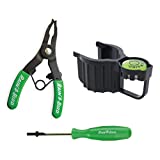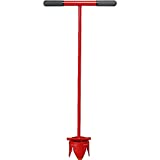<div class="banner-content"> <div class="container"> <div class="row align-items-center justify-content-between"> <div class="col-lg-8"> <div class="banner-text style-modern al-left pos-right light"> <div class="animated fadeIn"> <h1>Denver Sprinkler Start Up and Repair Tips</h1> <p class="banner-desc"> In general it is safest to have your sprinkler startup in Denver scheduled anytime after April 16th. However, there’s always around a 25% chance of a mild freeze until approx. May 19th (however, this would normally only affect young plants and not your pipes). </div> </div> </div> <div class="col-lg-4">
Sprinkler System Start-Up: A Comprehensive Guide to a Healthy Lawn
Table of Contents
- Introduction
- Step-by-Step Guide to Sprinkler Start-Up
- Common Sprinkler System Issues and Solutions
- Sprinkler System Maintenance Tips
- Conclusion
Introduction
A well-maintained sprinkler system is essential for a healthy lawn. As the seasons change, it’s crucial to properly start up your sprinkler system to ensure optimal performance and prevent damage. In this comprehensive guide, we will walk you through the process of starting up your sprinkler system, addressing common issues, and providing maintenance tips for a thriving lawn all season long.
Step-by-Step Guide to Sprinkler Start-Up
Follow these steps to start up your sprinkler system effectively:
1. Inspect Your Sprinkler Components
Before turning on the water, visually inspect all sprinkler heads, valves, and pipes for any signs of damage or wear. Replace any broken components and clear debris from around the sprinkler heads.
2. Gradually Open the Main Water Valve
Slowly opening the main water valve prevents a sudden surge of water pressure that could damage your sprinkler system. Turn the valve counterclockwise until it’s fully open, allowing water to fill the pipes gradually.
3. Check for Leaks
As water fills the pipes, carefully inspect your sprinkler system for any leaks. If you notice water pooling around sprinkler heads or valves, you may need to replace or tighten the affected components.
4. Test Each Sprinkler Zone
Activate each sprinkler zone individually using your controller. Observe the water pressure and coverage, making adjustments to sprinkler heads as needed to ensure even distribution.
5. Set Your Sprinkler Schedule
Program your controller with the appropriate watering schedule for your lawn’s needs. Consider factors such as soil type, plant species, and local weather conditions when setting your watering frequency and duration.
Common Sprinkler System Issues and Solutions
Here are some common sprinkler system issues and their solutions:
- Low Water Pressure: Check for leaks or obstructions in the pipes, and ensure the main water valve is fully open.
- Uneven Water Distribution: Adjust the angle and direction of sprinkler heads, and consider adding more heads if necessary.
- Clogged Sprinkler Heads: Remove debris from the nozzle and filter screen, or replace the head if it’s damaged.
- Faulty Controller: Replace the controller’s battery, reset the programming, or consult the manufacturer for further troubleshooting.
Sprinkler System Maintenance Tips
To keep your sprinkler system operating efficiently, follow these maintenance tips:
- Regular Inspections: Perform visual inspections of your sprinkler system components at least once a month, checking for damage or wear.
- Seasonal Adjustments: Adjust your watering schedule as needed to accommodate changes in weather and plant growth.
- Winterization: Properly winterize your sprinkler system by draining water from the pipes and turning off the main water valve to prevent freezing and damage.
- Professional Maintenance: Schedule annual professional maintenance to ensure your sprinkler system is functioning optimally and to address any potential issues.
Conclusion
Starting up your sprinkler system correctly is essential for maintaining a healthy lawn throughout the season. By following our step-by-step guide, addressing common issues, and implementing regular maintenance practices, you can ensure your sprinkler system operates efficiently and effectively, providing your lawn with the hydration it needs to thrive. </div> </div> </div> </div>
Please schedule start up and repairs here: 5280Sprinklers.com
please book online

Sprinkler tools that I recommend

If you are ready to upgrade your Denver sprinkler controller, I can recommend these

As an Amazon Associate I earn from qualifying purchases
Things to consider before starting your sprinkler in Denver:
If you had someone else winterize your system, they should have left the ball valves at 45 degrees as well as both test cocks at 45 degrees. If there is a drain cap below the PVB, it also should have been left ajar or removed and stored in a safe place for the Winter. If the ball valves/test cocks were left all the way open or all the way closed, there may be damage from the water left in those valves… it’s easy to spot the ruptures or use your finger to feel for them if they are out of sight.
A few DIY tips:
The Pressure Vacuum Breaker device must first be inspected to check for freeze damage.
Make sure that the water to the system is off at the shutoff valve inside the structure. Wear eye protection as pressure inside system can cause parts to act as projectiles. Check the top – bell cap – plastic or metal, if plastic and there is freeze damage – they sometimes do crack – even if there are not cracks remove the top and inspect the assembly within. If there is damage, generally, the assembly will have raised up on one side and will allow water to escape once the source is turned on.
If you have a metal cap and it is still present, remove this cap carefully and inspect poppet assembly for cracks. If no damage is found proceed to check the two ball valves for ruptures – usually they can been seen on the opposite side of the control handle. No damage found, proceed, note – all advice offered on this site is without warranty and or liability – use at your own risk.
Startup or charging method:
To startup your sprinkler system, use the following procedures:
- Ensure that the main shut-off valve is in the OFF position.
- Close all inlet and outlet drain valves on the system. Close inlet and outlet shut-off valves on backflow prevention assembly and all testcocks.
- Important: Turn on water supply slowly. Inspect PVB assembly for leaks before sending water to the sprinkler manifold. Slowly allow water into the PVB assembly via first control valve nearest to the source of the water. Next, slowly open the next control valve downstream – check for leaks in the PVB. Even if you have had your system winterized properly, the poppet assembly could fail if the full force of the water pressure is released too quickly as they are generally made of plastic.
- Leave all drain valves and test cocks closed.
Copper Theft and Denver Pressure Vacuum Breakers
The price of copper has gone up steadily over recent months and the rate of theft for pressure vacuum breakers is also on the rise. There are at least two methods to help secure your Pressure Vacuum Breaker. The unit is at most risk just after the sprinkler system has been winterized in the fall… the criminals know that there is no water supply and thus, makes it much easier for them to abscond with your items without being noticed.
- Install these and then remove the PVB completely during the winter, keep in your garage:
- Get an enclosure and have it installed around your PVB – an expensive option.
- Obscure your exposed copper pipes with a shrub, bucket, or anything else that might serve as camouflage.
